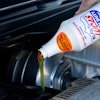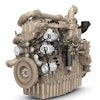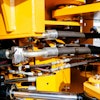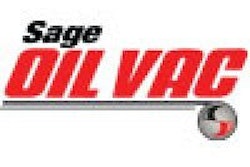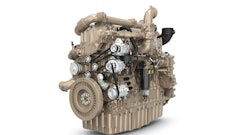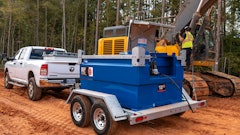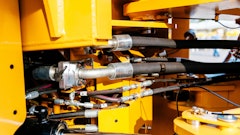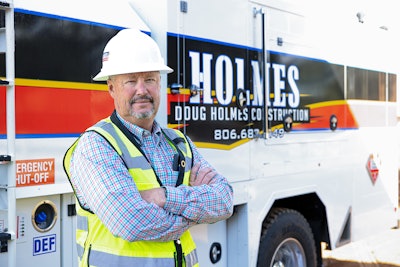
As your company grows, your equipment fleet’s preventive maintenance and refueling needs to evolve. To keep up, you need to monitor the effectiveness of your current approach and right-size your service tools. Take Doug Holmes Construction, a Texas-based company that updated its service equipment to meet the fueling and maintenance demands of an expanding fleet for example.
Company President and Owner Doug Holmes grew up in the construction business, working for his father’s paving and grading business. In 2011, he ventured to Lubbock, Texas, to help a friend adopt automated grade control when the advanced technology was still in its infancy in the region. After realizing the demand for advanced grading services, he launched Doug Holmes Construction in 2013.
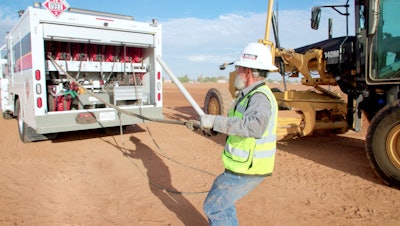 Having the right fuel and lube solution helps drive overall fleet efficiency.Sage Oil Vac
Having the right fuel and lube solution helps drive overall fleet efficiency.Sage Oil Vac
Pickups Struggle to Keep Up
“When we started, we serviced most of our equipment out of a pickup with a diesel tank in the back,” said Holmes. “As our needs grew, we added more pickups and more pickups. Finally, we got to the point that we just could not keep up.”
When three crew members struggled to keep up with the fleet’s maintenance schedule, Holmes realized he needed a different approach. In every other part of the business, Holmes and his crew were using state-of-the-art equipment and technology to get an edge over the competition. It was time to bring fuel and maintenance equipment up to speed.
Breaking the Bottleneck
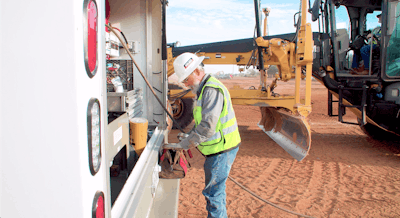 With no one-size-fits-all lube truck, Holmes weighed needs like product capacity and maneuverability to find the right solution.Sage Oil Vac
With no one-size-fits-all lube truck, Holmes weighed needs like product capacity and maneuverability to find the right solution.Sage Oil Vac
The challenge was to find a solution tailored to Holmes’s unique situation. With no one-size-fits-all lube truck, Holmes weighed needs like product capacity and maneuverability to find the right solution. After careful deliberation and consultation, they determined that a Class 7 FL1270S fuel/lube body fit their needs.
Upon delivery, Holmes quickly saw impressive efficiency gains.
“When it showed up, it was every bit as good as we’d hoped it would be,” he said.
Replacing a fleet of pickup trucks with a dedicated Class 7 fuel and lube truck allowed one man to maintain all 75 machines in the fleet, freeing up two employees to tackle other critical tasks. In today’s tight labor market, that’s a big win.
“I service all of the equipment in the field [with the Class 7 truck],” said Nick Balderama, service technician at Doug Holmes Construction. “There’s never a minute that I’m not busy throughout the day working here. This truck really makes my job easier because the size helps me get in and get out.”
Class 7 Truck Hits the Sweet Spot
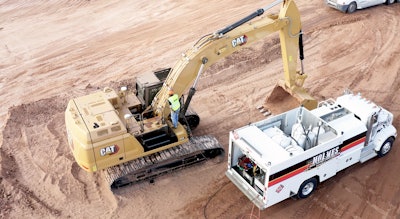 With the new truck, the team can roll right up to whatever equipment needs service.Sage Oil Vac
With the new truck, the team can roll right up to whatever equipment needs service.Sage Oil Vac
“[With the Class 7 truck] I can roll right up to wherever I need to service a piece of equipment, whereas if it were a little bit larger, sometimes I would have to just post up somewhere and let that equipment come to me,” said Balderama.
Having the right fuel and lube solution helps drive overall fleet efficiency. Doug Holmes’ Class 7 truck is outfitted with a 1,000-gallon diesel tank and five product tanks, allowing it to handle everything from diesel exhaust fluid (DEF) to hydraulic oil.
Having all the fluids needed in the right quantities helps Balderama be more productive without frequent trips to the shop—even during the busy season.
“This truck really helps me get a lot more done each day because it has all of the fluids that I could possibly need,” said Balderama. “On our heavier days, we can run as much as 800 gals. of fuel through this truck in one day.”
Keeping Things Clean
 In addition to peace of mind and cleanliness, the fuel and lube truck has enhanced overall productivity.Sage Oil Vac
In addition to peace of mind and cleanliness, the fuel and lube truck has enhanced overall productivity.Sage Oil Vac
It’s challenging to prevent spills with the antiquated practice of pulling drain plugs and draining oil into buckets. Lube exchange systems bring fluid exchanges into the modern age. Vacuuming the used oil out of the engine helps reduce the chance of spills, guards the jobsite against contamination, and keeps the technician clean.
Holmes has seen the difference the technology has made first-hand since investing in the fuel and lube truck.
“It’s a very clean operation, where it used to be extremely filthy,” said Holmes.
In addition to peace of mind and cleanliness, the fuel and lube truck has enhanced overall productivity. The system uses compressed air to build vacuum pressure and remove hot oil from products at six to eight gallons per minute. This allows the technician to safely complete more fluid changes per day compared to traditional pump-based systems.
All About Uptime
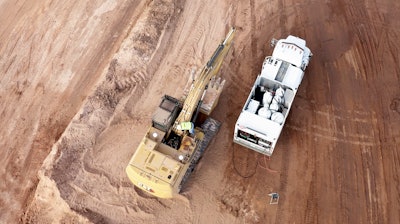 The challenge was to find a solution tailored to Holmes’s unique situation.Sage Oil Vac
The challenge was to find a solution tailored to Holmes’s unique situation.Sage Oil Vac
“[The service truck company] knows that we’re running one big truck that services a whole lot of equipment, and [that team has] been able to keep our uptime running, and they’ve made life very smooth and easy for us for the last two years,” says Holmes. “They have been extremely easy to work with. Anytime that we have a problem, they take it to heart.”
Doug Holmes has built a successful business by investing in state-of-the-art equipment and technology that gives his company an edge over the competition. Now the company has invested in a fuel and lube truck that increases the efficiency of servicing this fleet.
However, every fleet faces unique demands. When selecting the right preventive maintenance solution, fleet size, the distance between jobsites, and fluid types and quantities must be considered. You want to be able to carry all the fluids, filters, and components necessary to perform service without multiple trips back to the shop.
Fluid exchange speed is another important consideration for many preventive maintenance programs. There are many trade-offs, and it is advisable to seek expert advice.
